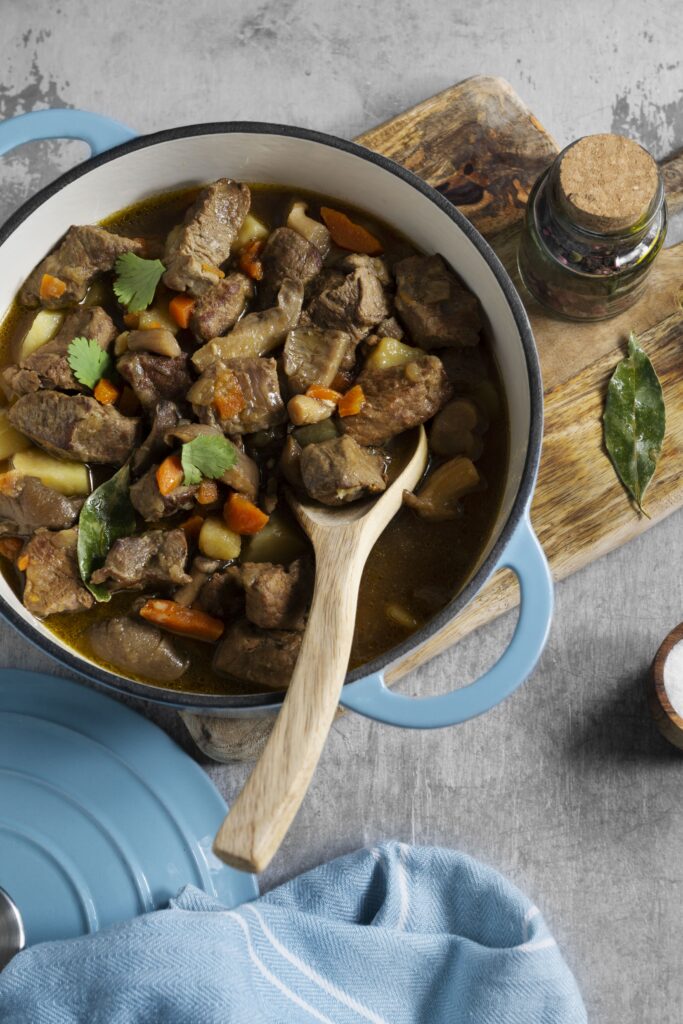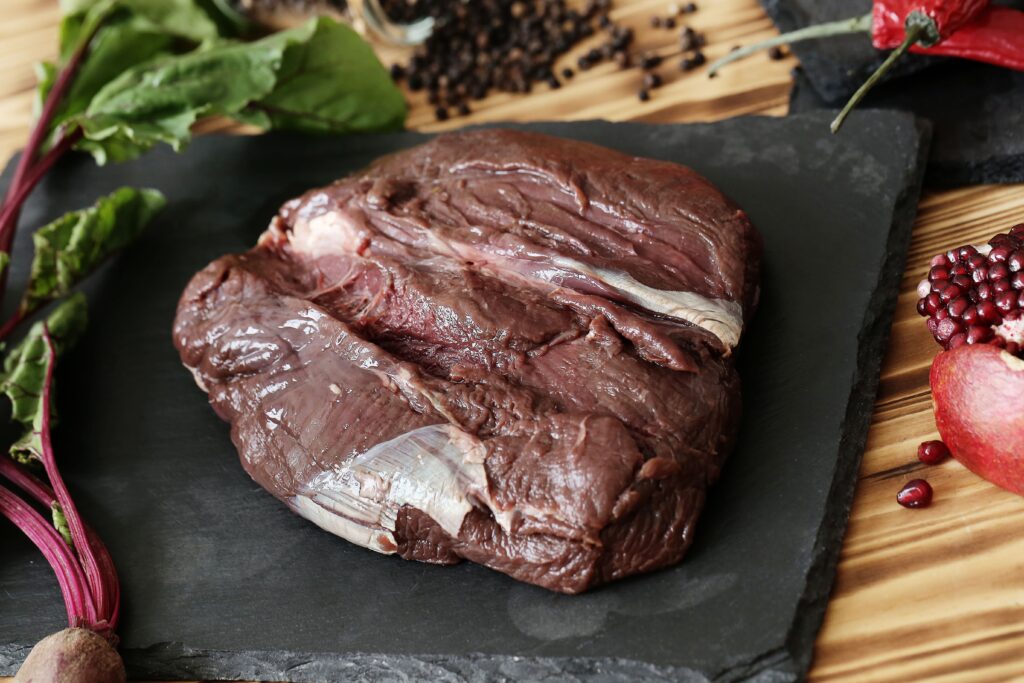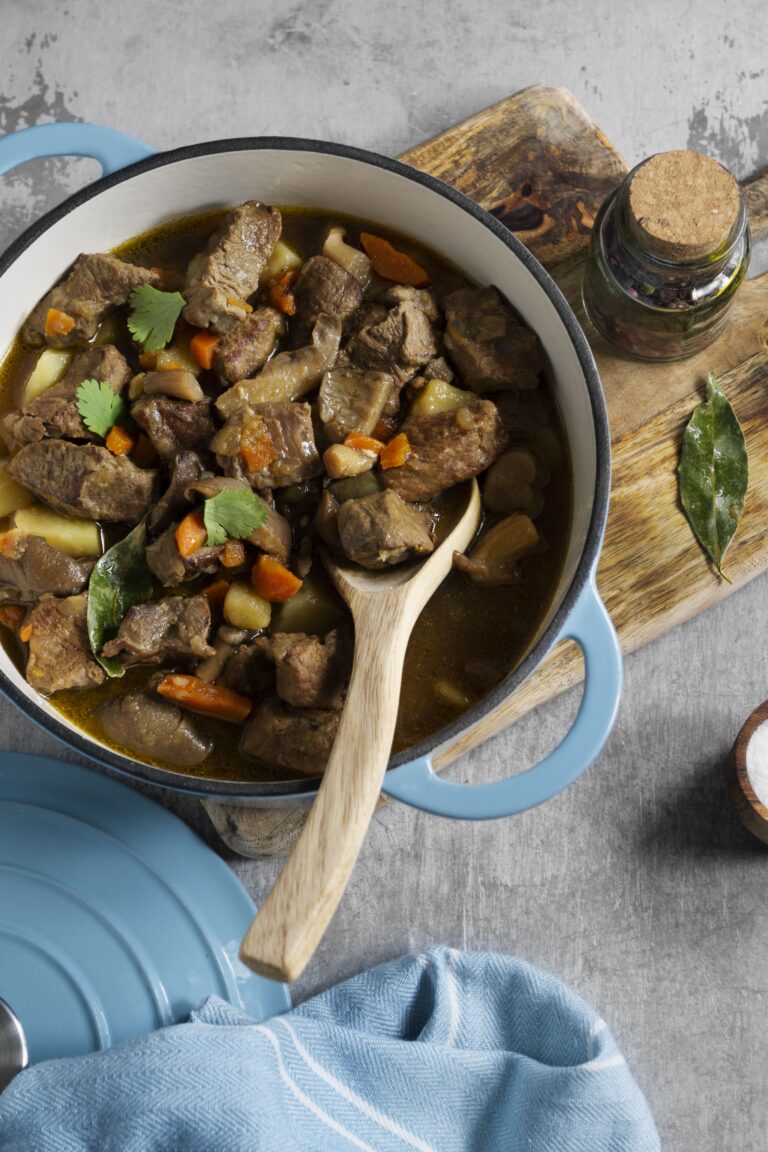Introduction
Beef heart is a nutrient-dense and versatile food that deserves more attention. Once overlooked in favor of mainstream cuts, this organ meat is now recognized as a gem by health enthusiasts and adventurous foodies. It’s packed with protein, essential vitamins, and minerals. When prepared correctly, beef heart is both a nutritional powerhouse and a surprisingly delicious addition to your diet.
In recent years, there’s been a growing interest in organ meats. Many people are looking for sustainable and nutritious ways to eat, and Organ meat is a top choice. It’s celebrated for its affordability, rich flavor, and impressive health benefits. Whether you’re an athlete seeking a protein boost or a home cook looking to try something new, Organ meat has something to offer.
This blog post will explore why beef heart is worth trying. You’ll learn about its nutritional profile, get tips for sourcing and preparing it, and discover easy recipes. Whether you’re new to organ meats or a seasoned fan, you’ll find valuable insights to help you enjoy this unique cut of meat.

What Is Beef Heart and Why Should You Eat It?
Organ meat is a versatile and nutritious organ meat that deserves a spot in your kitchen. As its name suggests, it comes from the heart of a cow, and while it may seem unconventional to some, it has been a dietary staple in various cultures worldwide for centuries. Known for its dense texture and rich flavor, Organ meat offers both culinary and nutritional benefits that set it apart from other cuts of meat.
Understanding Beef Heart as an Organ Meat
Beef heart is classified as organ meat, also known as offal, a category that includes other nutrient-packed parts like liver, kidneys, and tongue. However, Organ meat is unique compared to these other organ meats. Unlike liver, which has a softer texture and a more pronounced flavor, Organ meat has a texture and taste closer to lean steak, making it more palatable for those new to offal. Its mild flavor makes it a versatile ingredient that can be incorporated into a variety of dishes without overwhelming the palate.
From a culinary perspective, beef heart is prized for its tenderness when cooked properly and its ability to absorb flavors from marinades and spices. It’s also highly economical compared to traditional cuts of beef, providing more nutrition for a lower cost, making it an excellent choice for budget-conscious eaters looking to maximize their food’s health benefits.
Why Beef Heart Is a Superfood
Beef heart is often referred to as a “superfood” due to its exceptional nutrient density. This organ meat is packed with high-quality protein, making it an excellent option for muscle growth, repair, and overall bodily function. In addition to protein, Organ meat is rich in essential vitamins and minerals, including:
- B Vitamins (B12, B2, B6): These are crucial for energy production, brain health, and maintaining a strong immune system.
- Iron: Supports red blood cell production and prevents fatigue by improving oxygen transport throughout the body.
- Zinc and Selenium: Boost immune function and help with cellular repair and protection against oxidative stress.
- Coenzyme Q10 (CoQ10): A powerful antioxidant found in Organ meat that supports cardiovascular health and helps combat fatigue by improving energy production at the cellular level.
Beef heart’s nutrient profile also makes it a standout for specific health benefits:
- Supports Heart Health: As an organ, beef of heart contains nutrients like CoQ10 that are particularly beneficial for maintaining healthy blood vessels and supporting cardiovascular function.
- Boosts Energy Levels: The combination of iron and B vitamins makes Organ meat an excellent choice for individuals with active lifestyles or those recovering from fatigue or anemia.
- Enhances Immunity: With its high zinc and selenium content, beef heart helps strengthen the immune system and promotes faster recovery from illnesses.
Incorporating beef heart into your diet is a great way to access these health benefits while adding variety and depth to your meals. Whether you’re a health-conscious eater, a fitness enthusiast, or someone looking to try something new, Organ meat is an excellent choice that delivers both flavor and nutrition.
Beef of Heart Nutrition Facts
Beef heart is more than just a flavorful cut of meat—it’s a powerhouse of nutrition. Often regarded as a hidden gem in the world of organ meats, it delivers a unique combination of essential nutrients that support overall health. Whether you’re looking to fuel your body with high-quality protein, boost your intake of vital vitamins and minerals, or explore a nutrient-dense food, beef heart is a choice worth considering.
A Breakdown of Key Nutrients
- Protein Content and Amino Acid Profile
Organ meat is an exceptional source of high-quality protein, providing about 26 grams of protein per 100 grams of cooked meat. Protein is essential for building and repairing tissues, supporting immune function, and maintaining muscle mass. Additionally, beef heart offers a complete amino acid profile, meaning it contains all nine essential amino acids that the body cannot produce on its own. This makes it an excellent option for anyone looking to enhance their protein intake, particularly athletes and active individuals. - Essential Vitamins
- B-Complex Vitamins: Beef heart is particularly rich in B vitamins, including B12, B2 (riboflavin), B6, and folate. Vitamin B12 is crucial for nerve health, red blood cell production, and DNA synthesis, while riboflavin supports energy production and skin health. These vitamins are vital for energy metabolism and overall well-being.
- Vitamin A: Although present in smaller amounts compared to beef liver, Organ meat still contains this vitamin, which is essential for vision, immune health, and cellular growth.
- Important Minerals
- Iron: With a higher concentration than many traditional cuts of beef, the heme iron in beef heart is easily absorbed by the body, making it an excellent choice for preventing and addressing iron deficiency anemia.
- Zinc: Essential for immune function, wound healing, and hormone production, zinc levels in Organ meat are impressive.
- Phosphorus: This mineral plays a vital role in bone health, energy production, and maintaining healthy teeth.
By incorporating beef heart into your diet, you gain access to these vital nutrients in a natural, bioavailable form that your body can readily absorb and use.
Beef Heart vs. Other Meats
When it comes to nutrition, beef heart outshines many common cuts of meat and even other organ meats in several key areas:
- Beef Heart vs. Steak
While steak is a popular and protein-rich option, Organ meat contains comparable or even higher protein levels but with a leaner fat profile. Additionally, beef heart offers a wider array of micronutrients, such as Coenzyme Q10 (CoQ10) and more significant amounts of certain B vitamins. - Beef Heart vs. Liver
Liver is often hailed as the king of organ meats due to its nutrient density, particularly in vitamin A and iron. However, beef heart offers a milder flavor and texture, making it a more approachable option for those who find liver’s taste overwhelming. Organ meat is also higher in CoQ10, a compound beneficial for heart health and energy production. - Why It’s a Great Alternative
- Leaner Protein: Organ meat is naturally low in fat, making it an excellent choice for those looking to maintain a lean physique while enjoying a protein-rich food.
- Sustainability and Affordability: Compared to more traditional cuts, Organ meat is often more affordable and represents a sustainable way to consume meat by utilizing all parts of the animal.
| Nutrient | Beef Heart | Steak (Sirloin) | Beef Liver |
|---|---|---|---|
| Protein (per 100g) | 26g | 27g | 25g |
| Fat (per 100g) | 4g (leaner profile) | 12g | 3.6g |
| Calories (per 100g) | 140 | 190 | 135 |
| Iron | 4mg | 2.1mg | 6.2mg |
| Vitamin B12 | 9 µg (375% DV) | 2 µg (83% DV) | 83 µg (3,458% DV) |
| Coenzyme Q10 (CoQ10) | High (heart health benefits) | Low | Moderate |
| Vitamin A | Trace amounts | Trace amounts | 16,800 IU (over 300% DV) |
| Zinc | 4.9mg | 4.5mg | 4mg |
| Phosphorus | 220mg | 215mg | 360mg |
| Flavor Profile | Mild, slightly gamey, like lean steak | Rich and beefy | Strong, rich, often overwhelming |
| Affordability | High (budget-friendly) | Moderate | Moderate |

How to Cook Organ meat: Easy and Delicious Recipes
Cooking beef heart may seem intimidating at first, but with the right preparation and recipes, you can transform this underrated cut into a tender, flavorful, and nutritious meal. Whether you’re grilling it for a steak-like dish, slow-cooking it into a hearty stew, or tossing it into tacos, Heart of beef is incredibly versatile and surprisingly easy to work with.
Preparing Beef Heart
Proper preparation is essential to make beef heart tender, flavorful, and free from unwanted toughness or gaminess.
Tips for Cleaning and Trimming Beef Heart
- Start with Fresh or Properly Thawed Meat
If frozen, thaw the Organ meat completely in the refrigerator before use. This ensures even cooking and easy handling. - Inspect and Trim the Exterior
Heart of beef often has a layer of fat, connective tissue, or membrane. Use a sharp knife to carefully remove these parts. Leaving them on can result in tough and chewy meat. - Cut the Heart Open
After trimming, slice the beef heart open to expose its chambers. Remove any remaining connective tissue, veins, or blood vessels. These are inedible and should be discarded. - Slice for Your Recipe
Depending on the dish, cut the Organ meat into steaks, cubes, or thin strips. The size and shape should match the cooking method you plan to use.
Beef Heart: A Nutrient-Packed Superfood You Need to Try

Beef heart is a versatile, nutrient-dense organ meat that’s gaining popularity for its health benefits and affordability. Packed with protein, vitamins, and minerals, it supports energy, immunity, and overall well-being. This guide explores its nutritional value, preparation tips, and three easy recipes: grilled steak, slow-cooked stew, and tacos. Whether you’re new to organ meats or looking to expand your culinary repertoire, beef heart offers a delicious and sustainable option. Try it in your kitchen today!
Marinating Techniques to Enhance Flavor
Heart of beef has a mild, beefy flavor that pairs well with bold marinades. Marinating not only improves the taste but also tenderizes the meat.
Herbs and Spices Ideas
Enhance the flavor with herbs and spices like rosemary, thyme, smoked paprika, cumin, and chili powder. These complement the beef heart’s natural taste beautifully.
Basic Marinade Ingredients
Use acidic components like vinegar, lemon juice, or wine to break down the fibers. Combine these with olive oil and seasonings such as garlic, onion, herbs, and spices.
Soaking Time
Marinate the Heart of beef for at least 4-6 hours. For the best flavor, leave it overnight. This allows the marinade to deeply penetrate the meat.
Top 3 Recipes to Try
Once prepared, Heart of beef can be transformed into a variety of delicious dishes. Here are three easy and versatile recipes to get started:
1. Grilled Heart of beef Steak
Ingredients:
- Sliced beef heart steaks
- Olive oil
- Salt and pepper
- Minced garlic
- Fresh herbs (like rosemary or thyme)
Instructions:
- Marinate the Heart of beef steaks in olive oil, garlic, and herbs for at least 4 hours.
- Preheat the grill to medium-high heat.
- Grill the steaks for 2-3 minutes per side until medium-rare or medium. Avoid overcooking to keep them tender.
- Let the steaks rest for 5 minutes before serving.
Serving Tip: Pair with roasted vegetables or a fresh salad for a complete meal.
2. Slow-Cooked Organ meat Stew
Ingredients:
- Diced Heart of beef
- Onions, carrots, and potatoes (chopped)
- Beef broth
- Tomato paste
- Garlic
- Seasonings: paprika, bay leaves, and thyme
Instructions:
- Sear the diced Heart of beef in a hot skillet with olive oil until browned.
- Add the Heart of beef to a slow cooker along with chopped vegetables, tomato paste, and seasonings.
- Pour in enough beef broth to cover the ingredients.
- Cook on low for 6-8 hours until the Organ meat is tender.
Serving Tip: Enjoy with crusty bread or serve over rice for a hearty meal.
3. Heart of beef Tacos or Stir-Fry
Ingredients:
- Thinly sliced Organ meat
- Soy sauce, lime juice, and garlic
- Chili powder
- Bell peppers and onions (sliced)
- Tortillas
- Taco toppings: avocado, cilantro, salsa, lime wedges
Instructions:
- Marinate theOrgan meat in soy sauce, lime juice, garlic, and chili powder for 4 hours.
- Heat a skillet over high heat. Stir-fry the Heart of beef with peppers and onions for 3-5 minutes. Avoid overcooking.
- Warm the tortillas and assemble tacos with the stir-fried beef heart, vegetables, and your choice of toppings.
Serving Tip: Add a squeeze of lime and your favorite salsa for extra flavor.
By following these preparation and cooking tips, you can create a variety of delicious Organ meat dishes that are packed with flavor and nutrition. Whether you prefer it grilled, slow-cooked, or stir-fried, Heart of beef is a versatile ingredient that’s sure to impress!

Conclusion
Beef heart is one of the most underrated cuts of meat. It’s time to give this nutrient-packed superfood the recognition it deserves. Whether you want to add lean protein to your diet, explore the health benefits of organ meats, or try something new in the kitchen, Organ meat is a fantastic choice.
Its rich nutritional profile includes high-quality protein, essential vitamins, and minerals like iron and zinc. These nutrients make Organ meat a powerhouse for supporting energy, immunity, and overall well-being.
From a culinary perspective, Heart of beef is versatile and delicious. It has a steak-like texture and mild flavor that works well in various recipes. You can grill it, slow-cook it, or use it in tacos. Its affordability and sustainability make it a smart choice for budget-conscious and eco-conscious cooks.
Now that you know all about beef heart—its nutrition, preparation tips, and recipes—it’s time to try it in your kitchen. Start with one of the easy recipes shared in this post. Experience its rich flavors and health benefits for yourself. Don’t hesitate to get creative! Marinate and grill it, cook it into a hearty stew, or stir-fry it for a quick meal. The possibilities are endless.





